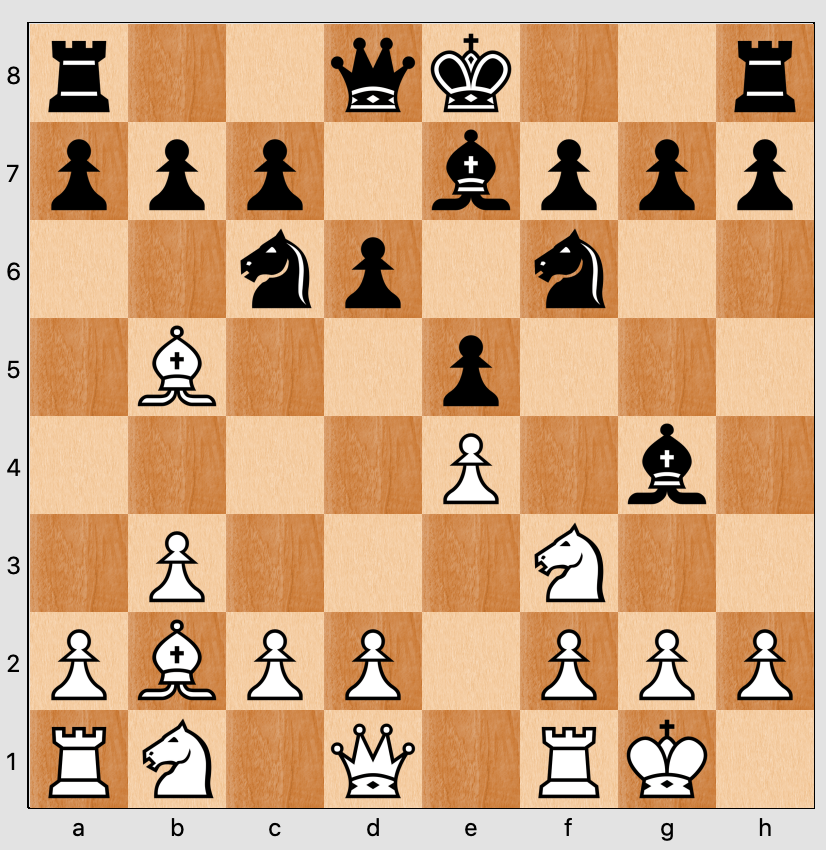10 Questions – one point for each correct answer.
Q1
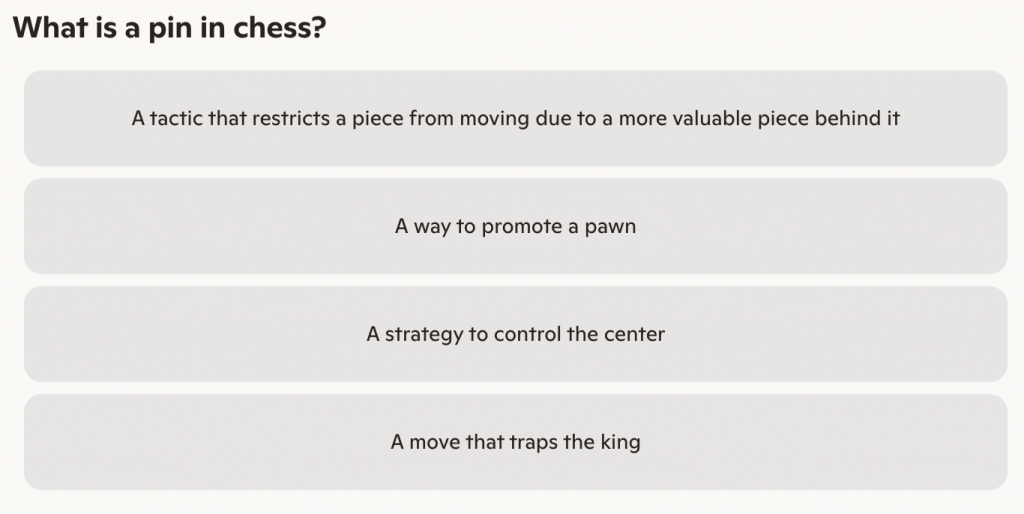
Q2
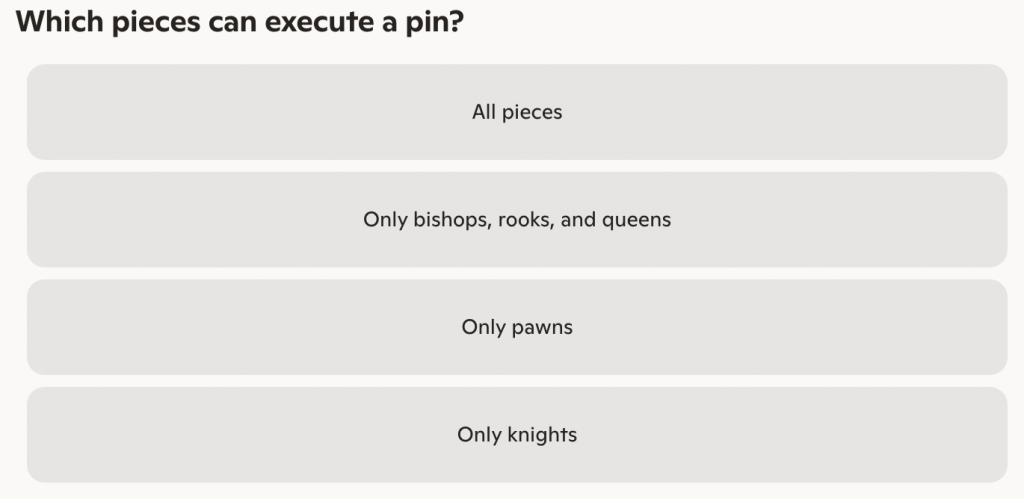
Q3
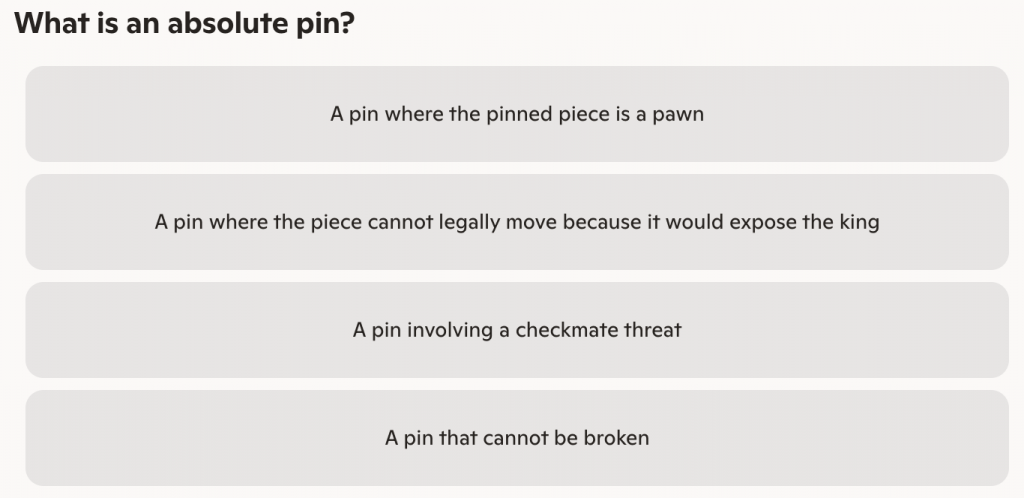
Q4
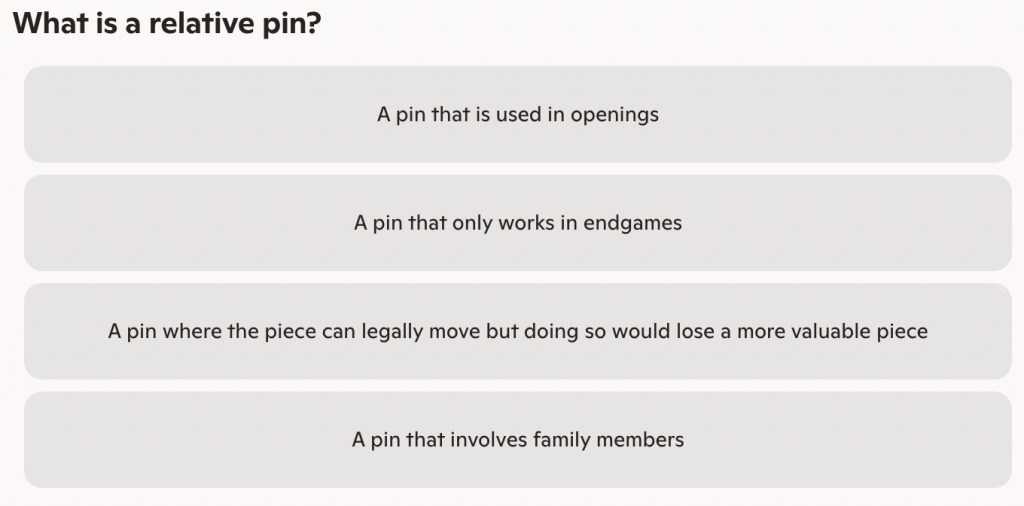
Q5
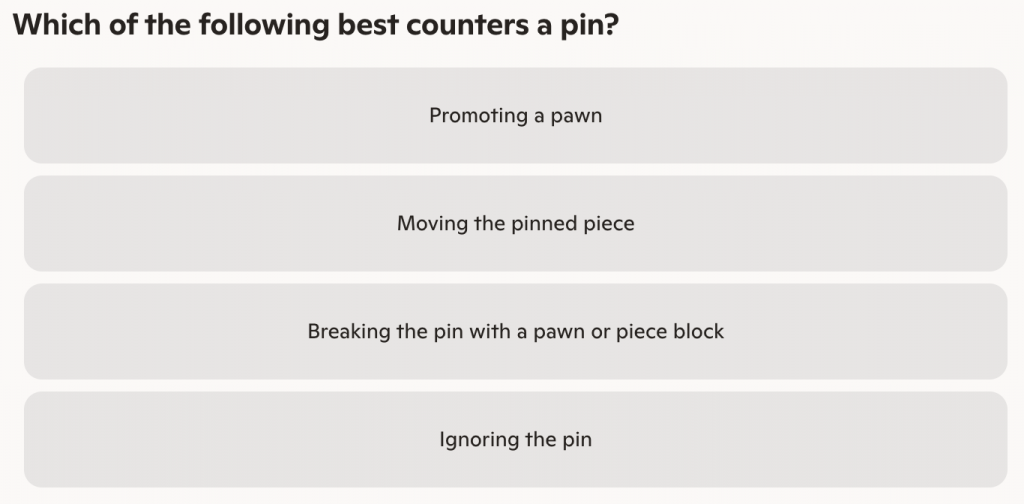
Q6
In which scenario is a pin most likely to lead to material gain?
- A) When the pinned piece is a knight
- B) When the pinned piece is defending another piece
- C) When the pinned piece is on the edge of the board
- D) When the pinned piece is a pawn
Q7
What is a “cross-pin” in chess?
- A) A pin that occurs diagonally
- B) A pin where two pieces pin each other simultaneously
- C) A pin that is reinforced by a second pin from another direction
- D) A pin that involves a knight and a bishop
Q8
Which of the following best describes a “Situational Pin”?
- A) A pin that restricts movement to a specific square
- B) A pin that targets a square rather than a piece
- C) A pin that prevents castling
- D) A pin that forces a piece to stay on a square to prevent a tactic
Q9
What is the strategic downside of relying too heavily on pins?
- A) Pins are easily broken by castling
- B) Pins often lead to stalemates
- C) Overcommitting to a pin can leave your pinning piece vulnerable
- D) Pins reduce your control of the center
Q10
Two part question, get both answers correct to win the point.
a) Where is the Absolute Pin? b) Where is the Relative Pin?
